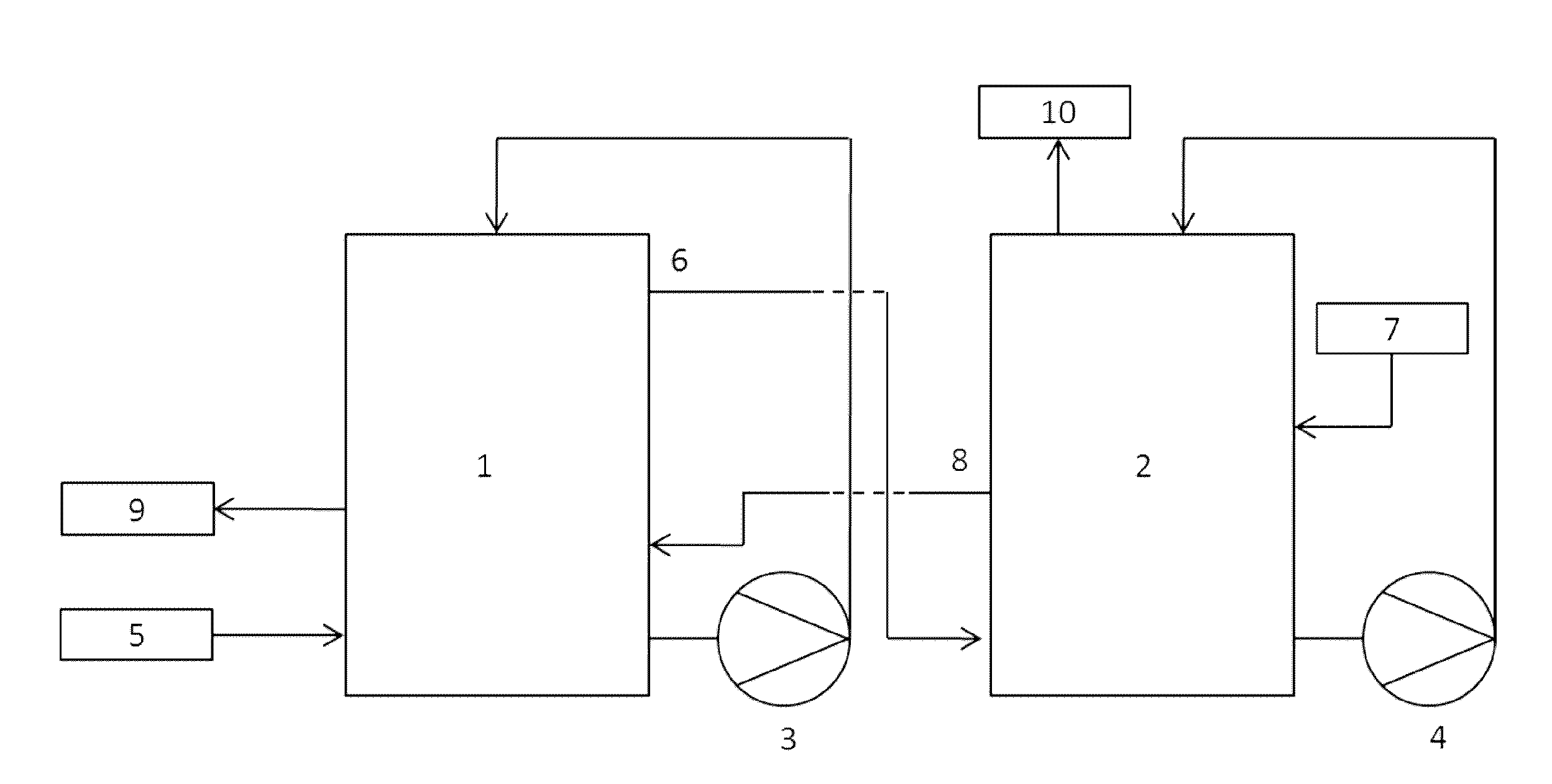Hydrogen chloride removal process
- Summary
- Abstract
- Description
- Claims
- Application Information
AI Technical Summary
Benefits of technology
Problems solved by technology
Method used
Image
Examples
example 1
[0088]A gas comprised of air and 1 vol. % hydrochloric acid (5) was brought in a 10 L oxychlorination reactor and contacted with 5 L of an aqueous pickle liquor comprising ferrous chloride obtained from an acid pickling process. The partial flow of hydrochloric acid was 5.8 L / h and the partial flow of atmospheric air was 520 L / h. In said reactor, an oxychlorination reaction occurs according to equation (2). Thereby, the concentration of ferrous chloride in said liquid was reduced and the concentration of ferric chloride was enhanced. Simultaneously, the exhaust gas was evacuated in a continuous manner from the reactor.
[0089]In order to determine the amount of hydrochloric acid in said exhaust gas, said exhaust gas was neutralized in a 1500 mL aqueous solution of 10% wt. NaOH and the amount of reacted NaOH was determined by potentiometric measurement.
[0090]The absorption and oxidation efficiencies are reported in Table 1. Also the amount of hydrochloric acid in exhaust gas is reporte...
example 2
[0091]Process as described in Example 1.
TABLE 2Process parameters of a hydrogen chloride removal processaccording to example 2 with resulting fraction ofabsorbed and reacted hydrochloric acid.FeFeCl2 / FeCl3total contact time (hours)6temperatureroom temperatureabsorbed in solution (9)0%reacted in solution (9)*97% content HCl in exhaust gas (10)**3%
example 3
[0092]A process for scavenging HCl from a gas flow was performed according to the process scheme of FIG. 1. A hydrochloric acid gas containing gas mixture (5) is entered in reactor 1 while an Fe2+-rich aqueous mixture (7) is fed to reactor 2. In reactor 1, said hydrochloric acid gas containing gas mixture (5) is contacted with the Fe2+ / Fe3+-mixture (8) from reactor 2. Simultaneously, a gas mixture partially stripped from hydrochloric acid (6) is transferred from reactor 1 to reactor 2. In said reactor 2, the gas mixture (6) is further stripped of hydrochloric acid upon contact with the Fe2+-rich aqueous mixture (7) before being disposed in the atmosphere (10).
[0093]The composition of the different liquid mass flows is summarized in Table 3. The composition of the liquid mass flows was determined inline using standard potentiometric measurements.
TABLE 3Composition of selected liquid compositions during the hydrochloricacid scavenging process according to Example 3.densityFeCl3HCl con...
PUM
| Property | Measurement | Unit |
|---|---|---|
| Temperature | aaaaa | aaaaa |
| Temperature | aaaaa | aaaaa |
| Temperature | aaaaa | aaaaa |
Abstract
Description
Claims
Application Information
 Login to View More
Login to View More - Generate Ideas
- Intellectual Property
- Life Sciences
- Materials
- Tech Scout
- Unparalleled Data Quality
- Higher Quality Content
- 60% Fewer Hallucinations
Browse by: Latest US Patents, China's latest patents, Technical Efficacy Thesaurus, Application Domain, Technology Topic, Popular Technical Reports.
© 2025 PatSnap. All rights reserved.Legal|Privacy policy|Modern Slavery Act Transparency Statement|Sitemap|About US| Contact US: help@patsnap.com


